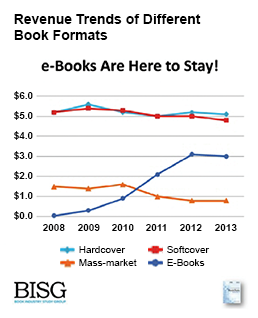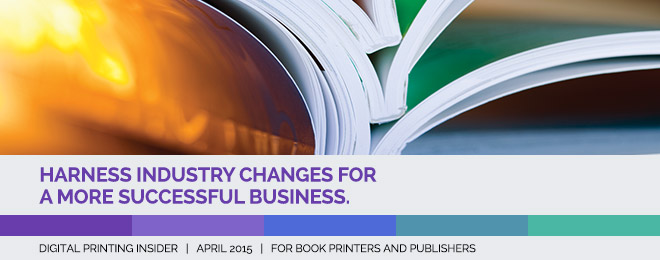The Demand for On-Demand Books
 Over the past few years, the industry has seen a shift in digital book manufacturing, driven by changing balance sheets and publishers’ needs to better manage inventories. In the recent past, few industries have been through more changes than the book business. This market is facing changing reading habits, the emergence of tablets and mobile devices, and the demise of many brick-and-mortar bookstores. All of these shifts are signaling a major industry transformation.
Over the past few years, the industry has seen a shift in digital book manufacturing, driven by changing balance sheets and publishers’ needs to better manage inventories. In the recent past, few industries have been through more changes than the book business. This market is facing changing reading habits, the emergence of tablets and mobile devices, and the demise of many brick-and-mortar bookstores. All of these shifts are signaling a major industry transformation.
The webinar entitled On-Demand is in Demand for Books was presented by Printing Impressions and Book Business and sponsored by Canon Solutions America. According to Barb Pellow, moderator of this webinar and a group director at InfoTrends, “We need to look at digital disruption as a transformation rather than a displacement. In many cases, paper books are not being replaced but are instead being blended with new technologies to make them more and more interactive.”
Nadine Vassallo, guest speaker and Project Manager of Research & Information at Book Industry Study Group (BISG), supports Pellow’s comments with the recently launched Book Stats, Volume 4. According to BISG, the book industry represented $27 billion in revenues and has seen flat growth, suggesting that there is no associated decline in readership overall. Vassallo notes, “While printed books account for about 75% of the market, e-books have had a large impact in the market and are here to stay.”  Her research highlights the trends in the top four publishing categories—trade, professional/scholarly, K–12, and higher education. Vassallo also explains the trends for print and digital book formats and the results of a recent study by BISG on e-book buyer preferences.
Her research highlights the trends in the top four publishing categories—trade, professional/scholarly, K–12, and higher education. Vassallo also explains the trends for print and digital book formats and the results of a recent study by BISG on e-book buyer preferences.
Angela Bole, Executive Director of the Independent Book Publishers Association (IBPA), delved into the importance of on-demand book publishing during the webinar. As the largest not-for-profit trade organization for publishers in the United States, IBPA’s mission is to lead and serve the independent publishing community by providing advocacy, education, and tools for success. According to Bole’s member data, about 40% of IBPA’s publishers produced less than 2,000 books in the past year yet still consider themselves successful. Representative of the smaller publishers around the world, Bole highlights why and how print on-demand books are critical for the success of these independent publishers.
The third and final guest speaker during the webinar was John Edwards, President and CEO of Edwards Brothers Malloy. As the fifth-largest book manufacturer in the U.S., Edwards Brothers Malloy reports annual sales of $100 million. Edwards comments, “As printers, we need to do more with less and recognize that one size does NOT fit all.” While Edwards’ company is still 70% offset (sheet-fed and web-fed), it also has digital toner and inkjet technologies. Edwards explains the differences in the technologies and how his company adjusts the various book types based on customer preferences and expectations in terms of quality, speed or quantity. Edwards continues, “The majority of the titles on our inkjet presses are short-run reprints of originally offset printed titles.” In wrapping up the webinar, Edwards outlined several manufacturing trends and offered practical suggestions for dealing with the print demands of publishers.
When you put it all together, the area of on-demand books creates an opportunity for publishers and print service providers alike to grow sales, revenues, and profits. This webinar is great for publishers and book printers of all sizes who are interested in adapting to industry changes to become more successful in the book market.
